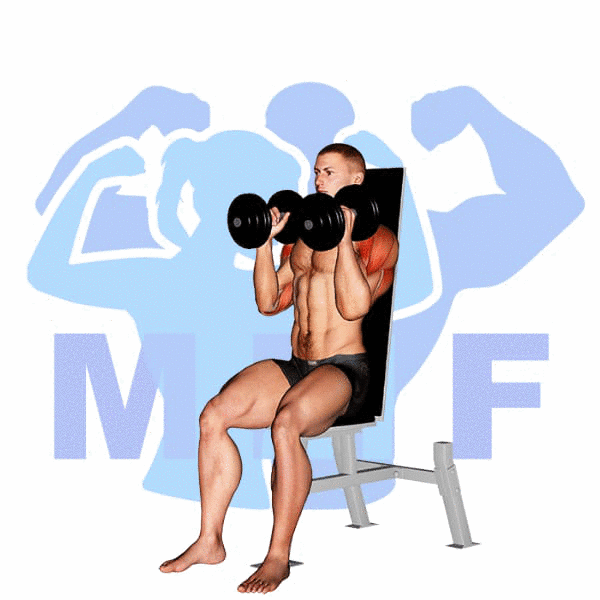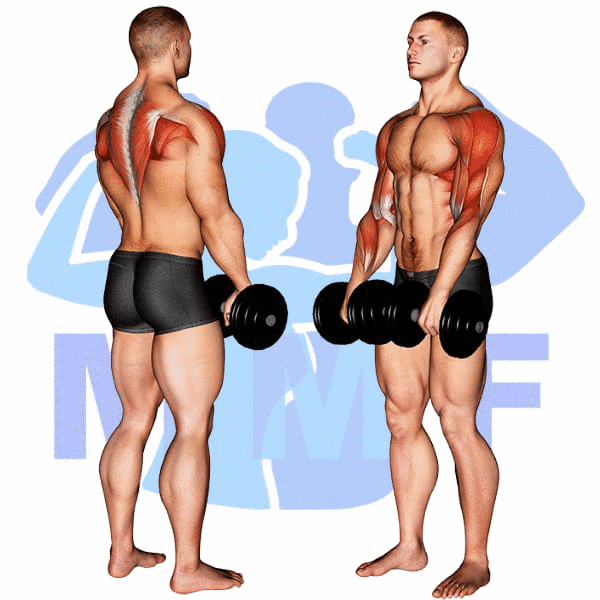Are you struggling to effectively target your rear deltoids during your workouts? Have you tried the traditional seated rear lateral raise without seeing the results you desire? It’s a common struggle, as many individuals struggle to activate these specific muscles properly. But don’t worry, there’s a solution to this problem – the cable seated rear lateral raise. In this blog post, we’ll dive into why this exercise is beneficial and provide step-by-step instructions to help you perfect your form and maximize your results.
Cable Seated Rear Lateral Raise Summary
- Primary Muscles: Deltoid – Lateral
- Secondary Muscles: Deltoid – Lateral, Infraspinatus, Rhomboids, Teres Minor, Trapezius – Lower, and Trapezius – Middle
- Equipment: Cable Machine with Tricep Rope
- Mechanics Type: Isolated
- Force: Push
- Utility: Auxiliary

Cable Seated Rear Lateral Raise Instructions
- Begin by setting up a bench between two cable pulleys setup at the low point with single handed handles.
- Grab the handles with the opposite hand and sit on the bench so that the cables cross under you legs.
- Next while keeping your arms straight raise your arms up to your side until your arms are both straight out.
- Then lower your arms back to you side slowly, while resisting the cables pull.
- Continue executing these raises for a complete set.
Video Tutorial
Cable Seated Rear Lateral Raise Muscles
Target (Agonist)
Synergists
Dynamic Stabilizers
- None
Stabilizers
- Adductor Magnus
- Erector Spinae
- Gluteus Maximus
- Hamstrings
Antagonist Stabilizers
- None

Benefits of Cable Seated Rear Lateral Raise
The Cable Seated Rear Lateral Raise is an excellent exercise for targeting the deltoid – lateral muscle. This exercise works to strengthen and tone the deltoid muscle, providing stability and strength to the shoulder area. It also helps to improve posture and balance, as it works the muscle group from a seated position. Furthermore, it can also help to improve shoulder mobility, as well as increase overall shoulder strength. When done correctly, this exercise can help to sculpt the deltoid muscle, creating a more defined look.
Tips for Performing Cable Seated Rear Lateral Raise
If you’re seeking to take your cable seated rear lateral raise to a new level, then you’re at the right place. Using these suggestions can allow you to maximize the advantages of this effective workout. Concurrently with strengthening your shoulders muscles, increasing movability, and also a reduced possibility of injury can all be accomplished with this exercise. So let’s get started and see what these tips can accomplish for you.
- Maintain a Neutral Spine – Keeping the spine in a neutral position is key to prevent injury and ensure that the muscles are worked effectively. This will also help to maximize the benefits of the exercise.
- Keep Shoulders Down and Back – Keeping the shoulders down and back will help to engage the posterior deltoids and ensure that they are getting the most out of the exercise. This will also help to avoid any strain on the neck and shoulders.
- Move Slow and Controlled – Moving slowly and with control will help to keep the targeted muscles working throughout the entire range of motion. This will help to maximize the benefits of this exercise and get more out of each repetition.
Benefits and Tips Video
Frequent Mistakes To Avoid
When conducting cable seated rear lateral raise, avoiding common mistakes can be the difference to achieving optimal results and avoiding injury. Additionally, in order to maximize your benefits of the exercise, appropriate technique is required. Through preventing these common errors, you will raise your ability to achieve the results you want. But don’t worry, it’s not nearly as hard as it might seem. You can execute the exercise safely and effectively by understanding the mistakes to prevent and by executing the correct steps. Let’s start by staying away from these standard errors and add this exercise to your training regimen.
- Not using proper form: Not using proper form while doing the cable seated rear lateral raise can lead to an injury or ineffective workout. It’s important to always use proper form to ensure a safe and effective workout.
- Not using the correct weight: Using a weight that’s too heavy can result in improper form, which can lead to an injury, and using a weight that’s too light won’t give the desired results. It’s important to use a weight that’s comfortable but challenging.
- Not taking breaks: Taking frequent breaks between sets is important for recovery and to avoid exhaustion. Skipping breaks can lead to muscle fatigue and decreased motivation, making it difficult to complete the workout.
Find More Cable Exercises Here
Variations and Complementary Exercises
If you’re looking for ways to switch up your routine, there are several variations, complementary, and alternative exercises for the cable seated rear lateral raise. These exercises will work similar muscles as the cable seated rear lateral raise and can be used to create an effective workout. The following exercises are great options to incorporate into your fitness routine.
Cable Single Arm Forward Raise

The Cable Single Arm Forward Raise is a great complement or alternative to the Cable Seated Rear Lateral Raise. It is an exercise that works the same muscles as the Cable Seated Rear Lateral Raise but in a different way. The Cable Single Arm Forward Raise requires you to hold a cable attachment with one arm and raise it forward at an angle. This works the middle and rear deltoids, as well as the rhomboids, biceps, and triceps. This exercise is perfect for those who need to work on their shoulder stability and strength while avoiding overworking the same muscles.
Dumbbell Around The World

Dumbbell Around The World is an excellent complement or alternative to Cable Seated Rear Lateral Raise. It targets the same muscle group and provides a similar range of motion. However, this exercise offers a more dynamic experience, as the user is required to move the weight in a circular pattern. This movement engages the stabilizing muscles in the shoulder and arm, and helps to build strength, balance, and coordination. It also increases the time under tension in the targeted muscles, helping to build size and strength more quickly.
Dumbbell Front Raise

The Dumbbell Front Raise is an excellent alternative or complementary exercise to the Cable Seated Rear Lateral Raise. This exercise targets the anterior and medial deltoids and is a great way to build shoulder strength and stability. It is performed by standing with feet hip-width apart, holding a pair of dumbbells at your side, and raising them in front of you with arms extended until they reach shoulder level. The dumbbells should be kept in line with your shoulders throughout the movement. This exercise can be done with lighter weights for higher repetitions or heavier weights for lower repetitions depending on the desired outcome.
Check Out These Top Cable Exercises
Dumbbell Full Can Lateral Raise

The Dumbbell Full Can Lateral Raise is an excellent alternative or complementary exercise to the Cable Seated Rear Lateral Raise. This exercise targets the deltoids, primarily the lateral heads, and can be done with either one or two dumbbells. To perform this exercise, start by standing with your feet shoulder-width apart, holding a dumbbell in each hand. With your arms fully extended, raise the dumbbells up and out to the sides until your elbows are at shoulder height. Hold this position for a few seconds before returning to the starting position. This exercise is great for improving shoulder strength and stability while also helping to build muscular endurance.
Dumbbell Iron Cross

Dumbbell Iron Cross is an alternative exercise to the Cable Seated Rear Lateral Raise. It helps target the same muscles, but with a slightly different angle of attack. It’s an excellent complement to the Cable Seated Rear Lateral Raise, as it helps build strength and stability in the shoulder area. The exercise works by lying on a flat bench and holding a pair of dumbbells at chest level, with the arms extended outward. Then you bring the arms up and out to the sides, until they are parallel to the floor. Finally, you slowly lower the arms back to the starting position. This exercise is great for targeting both the anterior and lateral deltoids and can help build strength and size in this area.
Dumbbell Lateral Raise

The Dumbbell Lateral Raise is a great complement or alternative to the Cable Seated Rear Lateral Raise. This exercise targets the same muscles in the shoulders and upper back as the Cable Seated Rear Lateral Raise, but with a slightly different angle of movement. The Dumbbell Lateral Raise requires the use of two dumbbells, and the range of motion is slightly wider than that of the Cable Seated Rear Lateral Raise. Additionally, this exercise can be easily adjusted to the user’s fitness level, making it suitable for both beginners and more experienced weight lifters alike.
Find More Shoulders Exercises Here
Opposing Complementary Exercises
In order to maximize the benefits of the exercise Cable Seated Rear Lateral Raise, it is important to pair it with exercises that work the opposing muscle groups. This will ensure a balanced workout and help you achieve your goals. Below are a few exercises that work the opposite muscles as the Cable Seated Rear Lateral Raise:
Smith Machine Decline Reverse Close Grip Bench Press

The Smith Machine Decline Reverse Close Grip Bench Press is the perfect complement to the Cable Seated Rear Lateral Raise, as it targets the opposing muscle group. The Smith Machine Decline Reverse Close Grip Bench Press works the chest and triceps while the Cable Seated Rear Lateral Raise focuses on the shoulder and back muscles. This exercise combination helps to build a balanced physique, with both muscle groups receiving a good workout.
Smith Machine Decline Bench Press

The Smith Machine Decline Bench Press is a great exercise to pair with the Cable Seated Rear Lateral Raise to create an effective workout. This exercise works the opposing muscle groups, targeting the chest and shoulders for a full body workout. It helps to build upper body strength and stability, while also helping to improve posture. The Decline Bench Press also allows you to move through a full range of motion, which further strengthens and develops the chest muscles. This exercise complements the Cable Seated Rear Lateral Raise by targeting the opposing muscle groups, which helps to create balance throughout the body and build a strong, healthy physique.
Smith Machine Bench Press

The Smith Machine Bench Press is an excellent exercise for targeting the chest muscles, as it allows for a more stable, controlled range of motion. It is complementary to the Cable Seated Rear Lateral Raise, as it works the opposing muscle group, the back. This helps to create balance in the upper body and ensures that both muscle groups are equally developed. The Smith Machine Bench Press also strengthens the core muscles and provides stability to the spine. As a result, it can help to improve posture, increase strength and reduce the risk of injury.
Transform Your Rear Delts with Cable Seated Raises
If you’re looking to add some size and definition to your rear deltoids, cable seated raises are an excellent exercise to incorporate into your routine. By performing this exercise, you’ll be able to isolate the muscles responsible for shoulder extension and achieve a well-rounded, defined look. To perform the exercise, you’ll need access to a cable machine and a bench or chair. Simply sit down with your back straight, grab the cable with your hands, and lift your arms out to the side until they reach shoulder height. Lower the weight back down slowly and repeat for several reps. With time and consistency, you’ll start to see noticeable improvements in your rear deltoids.
References: Wikipedia | ExRx.net | PubMed.gov | Comprehensive List of Shoulders Cable Exercises




